Where to Experience the Mid-Autumn Festival in Vietnam: A Travelers’ Guide
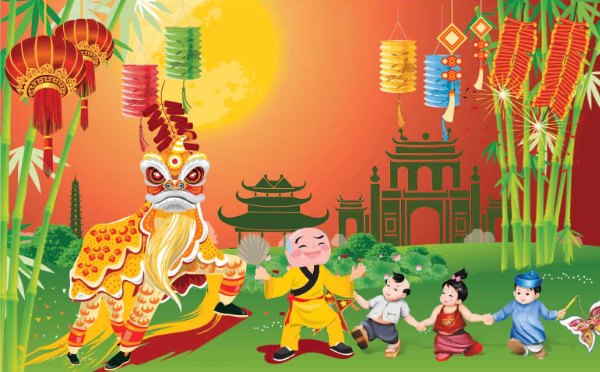
Every autumn, Vietnam comes alive with lanterns, lion dances, and the sweet aroma of mooncakes. Known locally as Tết Trung Thu, the Mid-Autumn Festival is one of the country’s most cherished celebrations.
It is a time for family reunions, thanksgiving for the harvest, and a festival especially beloved by children. Streets glow with star-shaped lanterns, shops overflow with colorful toys, and everywhere, people share moon cakes and gather under the full moon.
For travelers, experiencing the Mid-Autumn Festival in Vietnam is an unforgettable journey into the nations cultural heart, blending ancient traditions with modern festivities.
What is the Mid-Autumn Festival?
The Mid-Autumn Festival, also known as the Moon-Viewing Festival, is a traditional celebration in Vietnam that takes place on the 15th day of the 8th lunar month each year. It is an occasion for families to reunite, enjoy mooncakes, carry lanterns, and admire the full moon together. But do you know why people chose the full moon of the eighth lunar month to celebrate the Mid-Autumn Festival? And why do mooncakes come in so many different shapes and flavors? Let’s explore these fascinating aspects of the Mid-Autumn Festival in the following sections!
The origin of the Mid- Autumn Festival in Vietnam
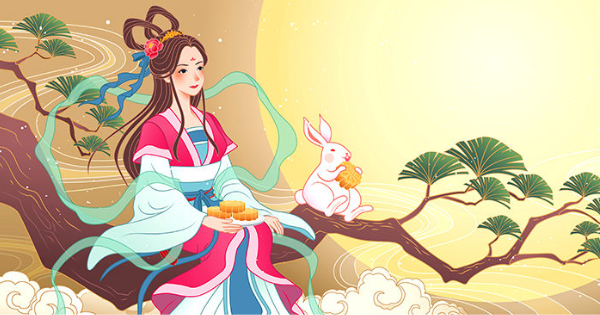
The Mid-Autumn Festival originated in China and is closely tied to many colorful folktales. One of the most famous stories is about Chang’e, a beautiful fairy who accidentally drank the elixir of immortality and ascended to the moon. To keep her company, the Jade Emperor sent her a jade rabbit. Since then, the images of Lady Chang’e and the Moon Boy (Cuội) have become symbols of the Mid-Autumn Festival, representing reunion and the dream of a better life.
Later on, the Mid-Autumn Festival was introduced to Vietnam and quickly became one of the nation’s most important celebrations. While it shares roots with China, the festival in Vietnam carries its own distinctive cultural identity. The Vietnamese infused the holiday with local folktales and unique customs—for example, the image of Cuội sitting under the banyan tree has become deeply familiar to generations of Vietnamese people.
Over thousands of years, the Mid-Autumn Festival has evolved in many ways but has preserved its core values. From its simple early rituals, it has grown into a lively occasion filled with exciting activities such as lantern parades, lion dances, and festive feasts.
The meaning of the Mid-Autumn Festival in Vietnam
The Mid-Autumn Festival is not merely a holiday, but one that carries profound meanings about family, culture, spirituality, and society.
Family: Above all, the festival is a time for family reunions. The image of family members gathering around a festive table, sharing mooncakes, and enjoying lantern parades has become a warm and familiar tradition. It is also an occasion for children to express gratitude to their grandparents and parents, strengthening family bonds.
Culture: The Mid-Autumn Festival helps preserve and promote Vietnam’s traditional cultural values. Through activities such as lantern processions, lion dances, and folk singing, younger generations are taught about the beauty of national heritage. Mooncakes, with their variety of shapes and flavors, also serve as a unique cultural symbol of Vietnam.
Spirituality: The festival is closely tied to spiritual practices. Ancestor worship reflects the respect and gratitude of descendants for those who have passed away. Admiring the full moon symbolizes perfection and fulfillment, while also being a moment for people to pray for happiness and good fortune.Society: The Mid-Autumn Festival is not only for family gatherings but also for fostering community spirit. Many charitable activities are organized during this time to support those in need, reflecting the Vietnamese values of solidarity, compassion, and mutual support.
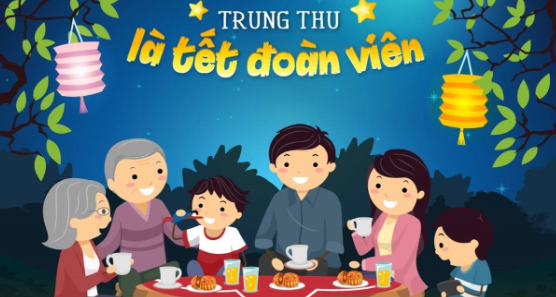
In summary, the Mid-Autumn Festival is a celebration rich in meaning. It is not only a time for joy and entertainment but also an opportunity to slow down, cherish traditional values, and nurture bonds within the family and community.
Activities During the Mid- Autumn Festival
Perhaps no holiday excites children more than the Mid-Autumn Festival. On the night of the full moon in the eighth lunar month, the streets glow with colorful lanterns and echo with the lively sound of festival drums. Let’s explore some of the fascinating activities that make this festival so unique:
Lantern Parade
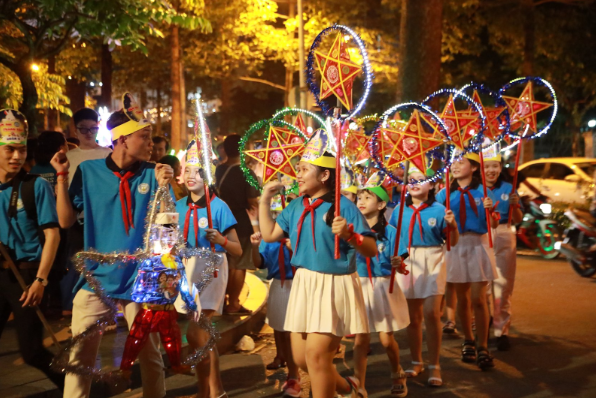
Lanterns are not just simple toys but also little works of art, crafted in various shapes, colors, and designs. From traditional star-shaped and carp-shaped lanterns to modern LED-decorated ones, each brings a vibrant and heart warming atmosphere to the Mid-Autumn night.
Moon Gazing
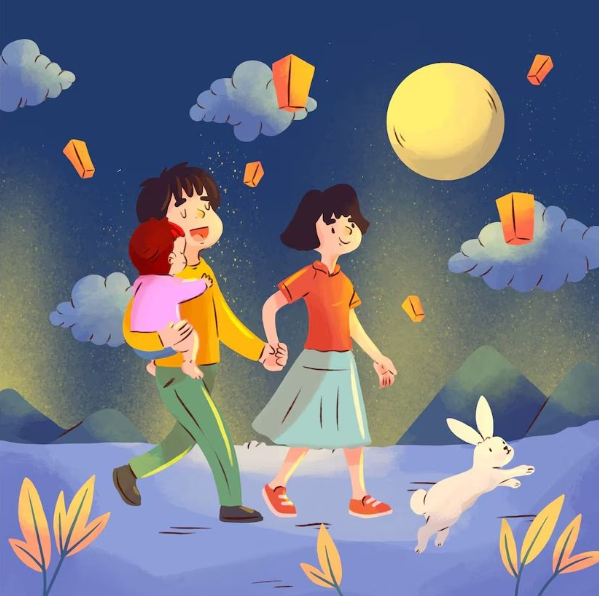
Moon gazing is an essential part of the Mid-Autumn Festival. Families often gather together to admire the bright full moon while sharing folktales about Lady Hang Nga and Uncle Cuoi. The act of watching the full moon symbolizes reunion and togetherness, as well as a moment for people to pray for happiness and good fortune.
Mid-Autumn Ancestral Offerings
On the night of the full moon, families prepare an offering tray to honor their ancestors. This tray usually includes moon cakes, fresh fruits, flowers, and other traditional foods. The ritual reflects the descendants’ gratitude to their ancestors while praying for blessings and protection from past generations.
Mid- Autumn Feast (Phá Cỗ)
After the ancestral worship, families gather around the offering tray to enjoy the Mid-Autumn feast. This is a special moment of reunion where members share delicious food, laughter, and warm conversations. Beyond just being a festive activity, the feast holds deep meaning—it symbolizes love, unity, and the preservation of cultural traditions passed down through generations.
Lion Dance – A Cultural Highlight of the Mid-Autumn Festival
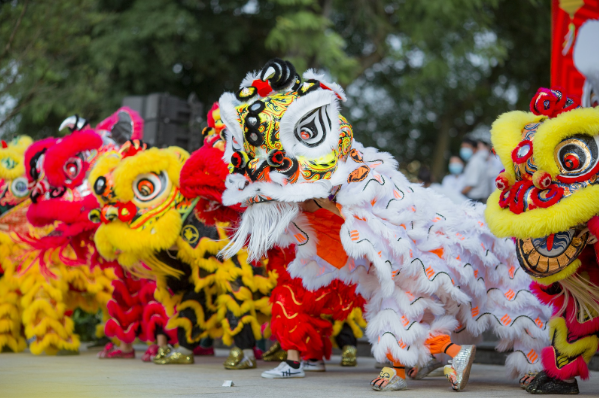
The lion dance is a vibrant traditional performance, especially popular during festivals like the Mid-Autumn Festival. The sight of majestic, lively lions moving gracefully to the rhythm of drums and gongs always brings joy and excitement to the crowd. It is not only an entertaining show but also a symbol of luck, prosperity, and happiness.
The lion dance symbolizes good fortune, prosperity, and the act of driving away evil spirits. That’s why during the Mid-Autumn Festival, people often invite lion dance troupes to perform, wishing for a year filled with peace and happiness. Beyond its spiritual meaning, the lion dance is also a collective activity that requires precise teamwork and coordination among performers, reflecting unity and strong bonds within the community.
Eating Moon cakes – The Joy of Routine
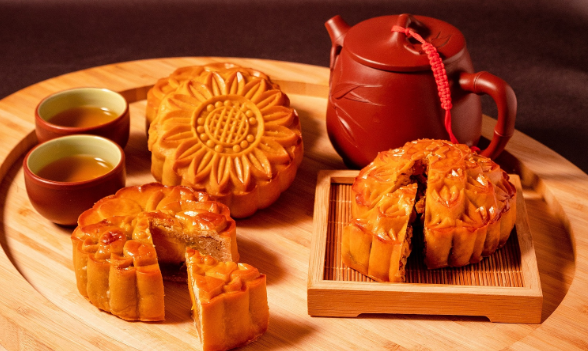
Moon cakes are more than just a festive treat—they represent reunion and togetherness during the Mid-Autumn Festival. The image of family members gathering around, sharing delicious moon cakes, and enjoying each other’s company has become a cherished tradition in Vietnam.
Where to Experience the Mid-Autumn Festival in Vietnam
Hanoi – Lantern streets of The Old Quater
During the Mid- Autumn Festival, Hang Ma street in Hanoi transforms into a glowing wonderland, overflowing with colorful lanterns, paper masks and festive toys. The entire Old Quarter comes alive as families and children flock to the street to shop, stroll, and soak in the vibrant atmosphere. Beyond the lantern markets, the city also hosts traditional lion dances and temple offerings, filling the night with the rhythms of drums and the scent of incense. Together, these sights and sounds create a festive spirit that captures the very heart of Tết Trung Thu in Hanoi.
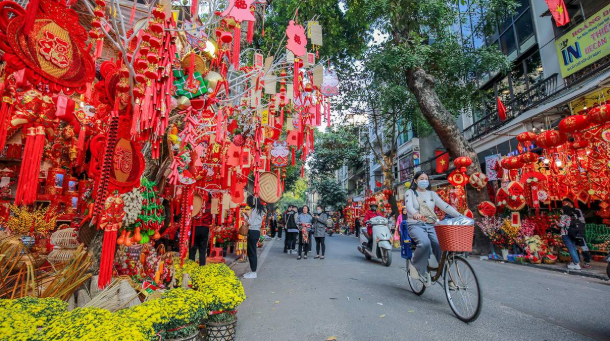
Hoi An Ancient Town – Magical lanterns by the river
Hoi An Ancient Town becomes even more enchanting during the Mid – Autumn Festival. Already famous for its monthly Lantern Festival, the ancient town glows brighter than ever on this special night. The narrow streets are lined with colorful lanterns, while the Thu Bon River shimmers with hundreds of floating lights, creating a magical, dreamlike scene. As families release lanterns onto the water and gather to celebrate, travelers are invited to join in the moment – wishing for peace, happiness and good fortune under the full moon.
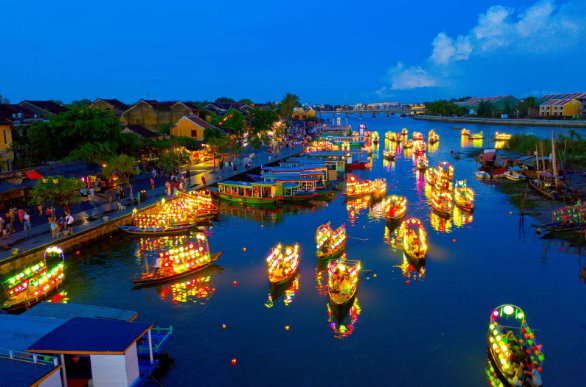
Hue City – Tradition in the Imperial City
In Hue, The Mid-Autumn Festival carries a sense of timeless tradition. Pagodas and local families keep the most authentic ceremonies alive, from ancestral offerings to lantern displays rooted in heritage. Unlike the bustling celebrations in larger cities, the atmosphere in Hue is quieter and more intimate, allowing travelers to experience the festival’s spritual depth and cultural authenticity. Here, Tết Trung Thu is less about spectacle and more about honoring values passed down through generations.
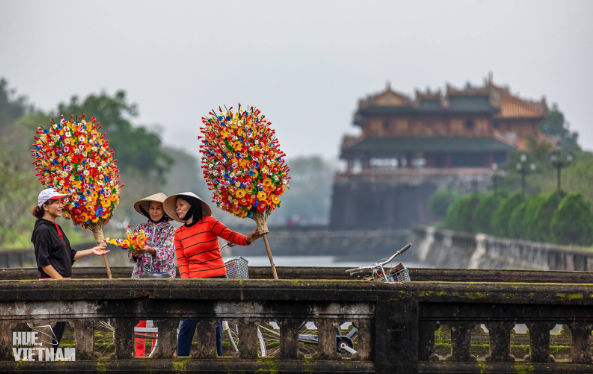
Ho Chi Minh City – Chinatown
In Ho Chi Minh City, Chợ Lớn (Chinatown) becomes the beating heart of the Mid-Autumn Festival. The streets burst into life with dazzling parades, colorful lion dances, and the rhythmic sound of drums echoing through the night. Market stalls spill over with moon cakes, lanterns, toys, and festive treats, creating a vibrant and joyful atmosphere. For travelers, wandering through Chợ Lớn during Tết Trung Thu is a feast for the senses – where tradition, community, and celebration come together in one unforgettable experience.
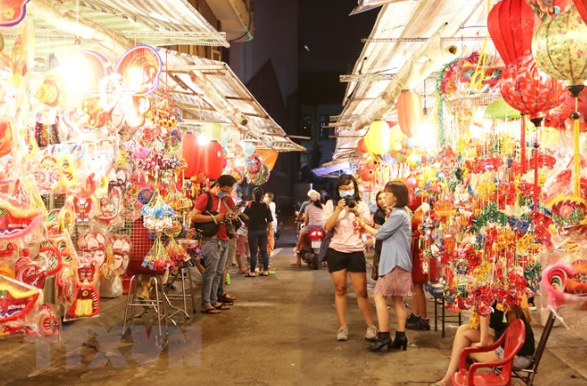
Travel Tips for Experience The Mid – Autumn Festival
The Mid-Autumn Festival usually takes place in September or early October, depending on the lunar calendar. During this time, Vietnam’s streets transform into vibrant celebrations filled with lantern parades, lion dances, and mooncake stalls. In Hanoi, the famous Hàng Mã Street becomes a dazzling hub where families shop for colorful lanterns, masks, and toys. In Ho Chi Minh City, Nguyễn Huệ street lights up with festive decorations and cultural performances. Meanwhile, the charming lantern-lit night markets of Hoi An offer travelers a magical experience under the full moon. A quick travel note: the streets can get extremely crowded during the festival, so it’s best to keep an eye on your belongings while you soak in the joyful atmosphere.
A Journey of Light and Family
The Mid-Autumn Festival in Vietnam is more than a celebration—it is a cultural window into Vietnamese values of gratitude, unity, and joy.
For travelers, joining Tết Trung Thu means more than tasting mooncakes or watching lion dances—it is sharing in the laughter of children, the warmth of families, and the timeless glow of lanterns under the harvest moon.
Whether in Hanoi’s lantern streets, Hoi An’s riverside glow, or Ho Chi Minh City’s bustling parades, you will experience Vietnam at its most enchanting.
✨If you don’t receive a response, please contact me directly via my WhatsApp number or send me an Email📱 WhatsApp: +84 383 624 632 📧 Email: info@saigontastetours.com 🌐 Website: www.saigontastetours.comBook a Once-in-a-Lifetime Experience with us
OUR EXPERIENCES
Ao Dai Motorbike Tours Cu Chi Tunnels Excursions Ho Chi Minh Day Trips, and Combos Mekong Delta Adventures Saigon: Culture & History Saigon Street Food Southern Vietnam Coastal Adventures Taste Of Saigon Tours
Don’t leave just yet—stay with us a bit more!
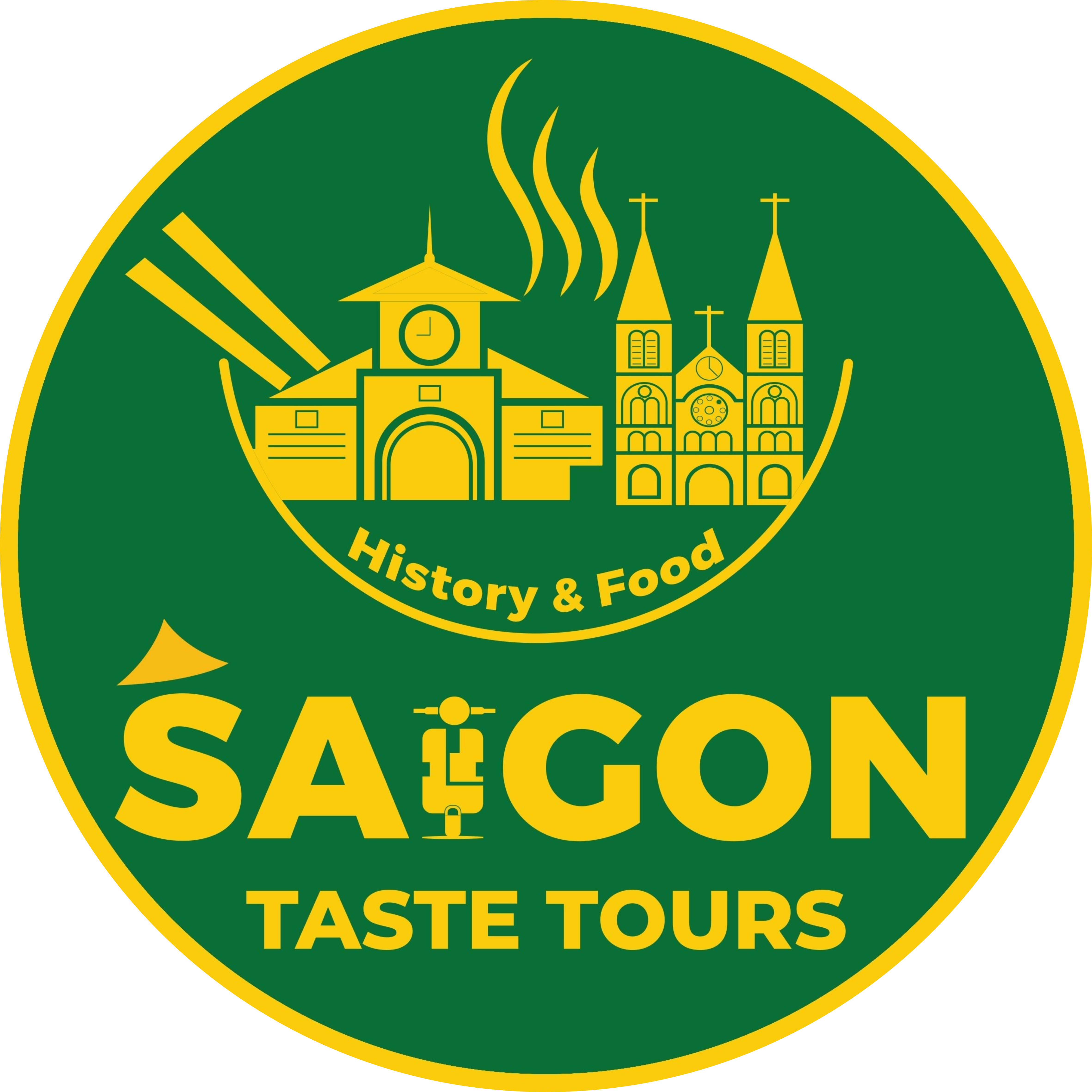
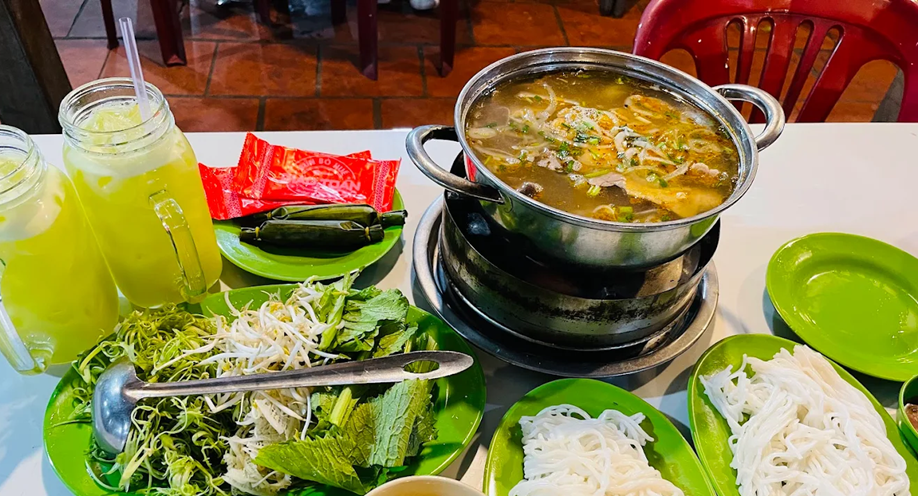

Leave a Reply